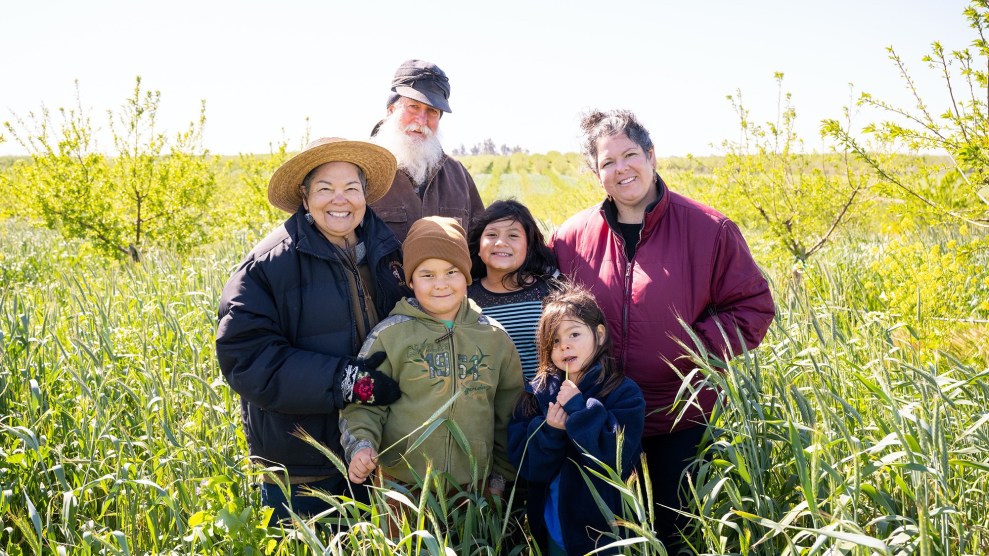
The Burroughs family has adopted regenerative agricultural practices on their farms so they can meet the challenges of climate change.
This content was written by Randi Druzin, and paid for by American Farmland Trust; it was not written by and does not necessarily reflect the views of Mother Jones' editorial staff. See our advertising guidelines to learn more.
Climate change is wreaking havoc on California farms, which produce two-thirds of the country’s fruits and nuts and at least one-third of its vegetables. Farmers cope with reduced winter chill hours, crops blooming earlier, heat waves, and drought, and scientists say the situation will only get worse in the years ahead, resulting in lower crop yields and temperatures so high that some areas will no longer be suitable for the crops growing there today. They are urging farmers to adapt and prepare for that reality. Some families already have.
The Burroughs family, which owns and operates four farms in the San Joaquin Valley, has embraced regenerative agriculture, a system of practices aimed at rehabilitating and enhancing the farm’s ecosystem by emphasizing soil health and effective water management.
“We utilize our water as best we can by monitoring our applications,” says Benina Burroughs Montes. “We continue to nurture the soil. By utilizing regenerative practices, our farm will be able to withstand the fluctuations of weather, especially the heat spells that last for weeks.”
Climate change is no longer a challenge farmers will face. It is one they now face. Like the Burroughs family, other farmers must recognize the importance of regenerative agriculture for their own good and that of the planet.
“People are starting to see the problem more widely now. They are recognizing that the weather is erratic and is causing a lot of problems,” says Bianca Moebius-Clune, PhD, the climate initiative director at American Farmland Trust (AFT). “We’re now seeing the beginning of a societal paradigm shift in agriculture.”
Paul Lum, AFT agricultural specialist, shares that view. “We’re seeing climate change affect our lives,” he says. “Farmers have an opportunity to slow it down. It’s a major challenge, but it has never been more urgent. Some farmers are practicing regenerative agriculture now, but we have to get the message through to others.”
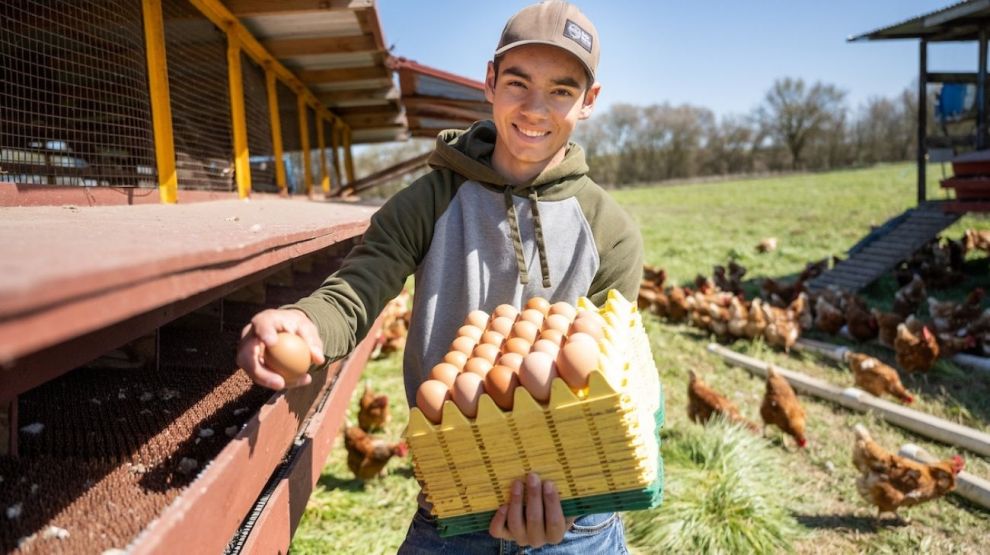
Sound agriculture practices are critical to the wellbeing of our future generations.
“Overwhelming” challenges ahead
Along with other land use, agriculture is responsible for about 25 percent of human-created greenhouse gas emissions. While farmers’ practices have contributed to climate change, a transition to regenerative practices could help fix the problem. Conservation tillage is essential to regenerative agriculture. By minimizing soil disturbance, farmers prevent soil from eroding and carbon dioxide from being released into the atmosphere. Low- or no-till practices create an environment that soil organisms—which there are more of in a handful of soil than there are people on Earth—can thrive and improve soil function. At the same time, these practices reduce pollution in water and air. Farmers who aim to minimize soil disturbance tend to be wary of other activities that compromise soil health. They know that misapplied fertilizer, pesticides, and other soil disruptions can alter the symbiotic relationship between plant roots and soil organisms.
Diversity is key to regenerative farming. Plants release carbohydrates and other compounds through their roots, and microorganisms feed on those compounds and free up nutrients for plants and soil organisms to use. The compounds and organisms that feed on them vary from plant to plant, so when farmers increase plant diversity in their fields, they help create high-functioning, nutrient-dense soil—and that contributes to better, more reliable yields. Farmers who have embraced regenerative agriculture are aware of that, and because livestock have nutrient-rich manure, grazing can also help build high-functioning soil.
The value of cover crops and perennial, well-managed pastures can’t be overstated. When soil is left exposed to the elements between cash crops, it erodes, has extreme temperature swings, and can lose nutrients to water and air. By using cover crops—plants grown in fields when cash crops are not, solely to cover the soil—farmers protect and enrich the soil, enhancing its ability to store water and fight pests and diseases.
An increasing number of farmers also rotate their crops, growing various ones sequentially on the same plot of land to prevent the buildup of pests and diseases and optimize the use of soil nutrients. Plants from various families require different amounts of nutrients, and their root systems penetrate the soil to various levels.
Regenerative farming practices create healthier soil, which in turn improves the quality of groundwater. These practices also improve the ability of soil to retain water, which ensures water doesn’t run off during the downpours that cause flooding and deplete valuable topsoil. All of this improves the soil’s ability to withstand drought.
“Our farm is more prepared for the big fluctuations that happen with climate change,” says Burroughs Montes. “We are hopeful our soil and plants can withstand the more intense weather patterns over the next 10 to 15 years.”
“Going forward, farmers will need to handle extreme weather, new weeds, new pests, and new diseases, among other things. Those challenges may be overwhelming,” says Moebius-Clune. “But if farmers transition to regenerative systems to improve the soil, its organisms will take care of farms and livelihoods.”
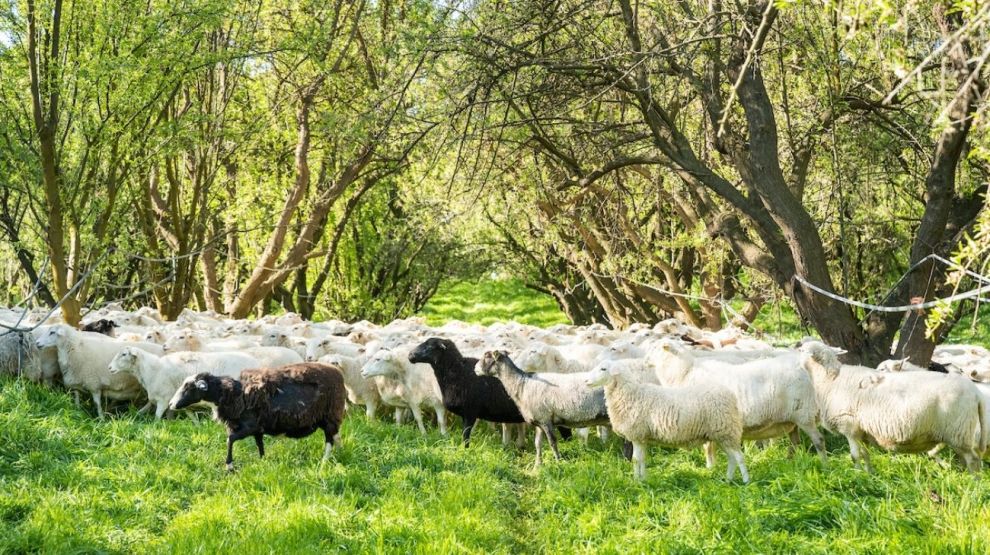
Animal activity provides natural weed suppression as well as a source of nutrition for the soil.
Regenerative farming is profitable
Transitioning from conventional farming to regenerative farming is a big undertaking. But it’s well worth the effort, and not just because it’s good for the environment—it’s also profitable.
AFT conducted a series of case studies assessing the economic value of adding regenerative practices. The farms in the studies reported profit increases averaging $37 per acre annually as well as yield increases between 2 to 22 percent related to improved soil health. Investment in soil health returned nearly three dollars for every dollar invested for the study’s participants.
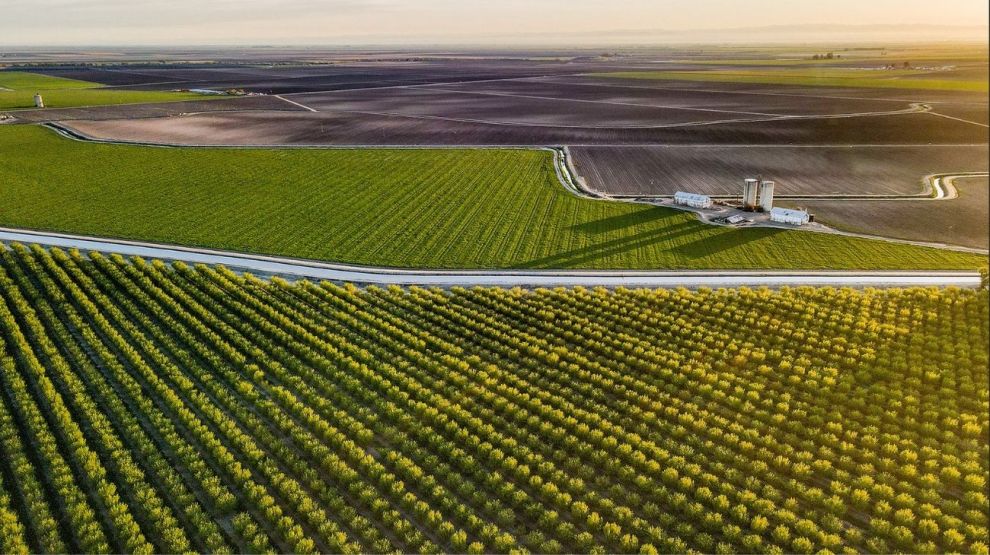
All Americans are affected by how farm and ranch land is managed.
AFT believes that when governments support training and incentivize regenerative practices, farming can change. An initiative in Indiana is a case in point: For every acre of cover crop that was subsidized, four more were planted. Farmers realized regenerative practices make good business sense. When people across the country inform themselves about agriculture and farming principles, they can put food-purchasing dollars toward regenerative farming. Market forces will drive change in the system.
As the climate crisis worsens, farmers are looking for solutions, and many are considering regenerative farming. According to Moebius-Clune, this is a natural progression: “We used to have landlines with rotary dials. Now everyone has a smartphone. We need to redefine conventional agriculture. It needs to be regenerative. Opportunities for improved farm viability, human health, and resilience in our agriculture abound.”
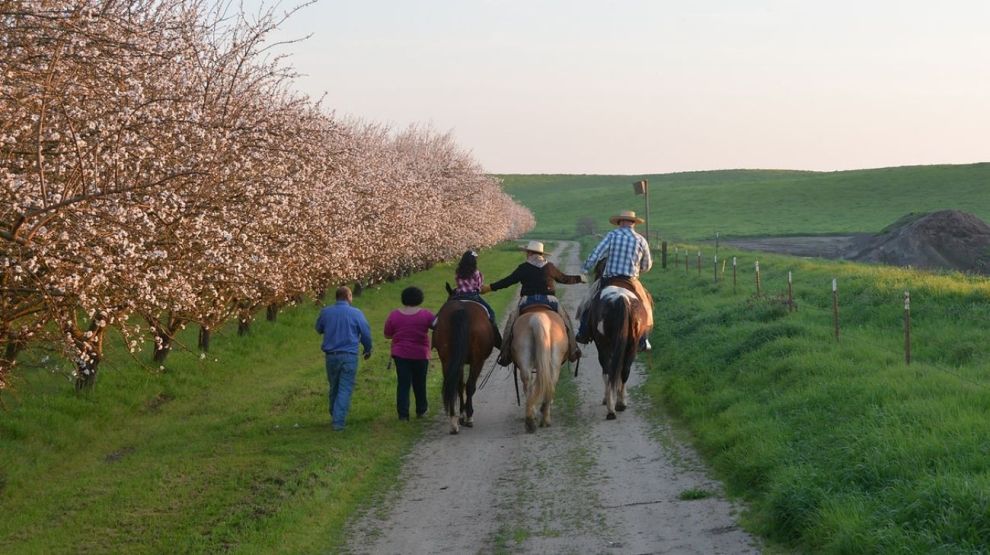
The Burroughs family farms are prepared for weather fluctuations caused by climate change.
“We’re now working with farmers and ranchers to adopt systems of practices that regenerate soil, and that is critical,” she says. “There are about 900 million acres of farm and ranch land in the U.S. How it is managed affects everyone. Regenerative soil management systems create better livelihoods for farmers and improve the environment. That’s what we need for this country to thrive.”
Rosie Burroughs also sees a bright future for regenerative farming. “Healthy soils are what every decision should be made on,” she told CSU, Chico’s Center for Regenerative Agriculture and Resilient Systems. “Healthy soil equals healthy plants. Healthy plants equal healthy animals and healthy people. And if we have healthy soils and we’re farming in a regenerative way, then we have a healthy planet.”
